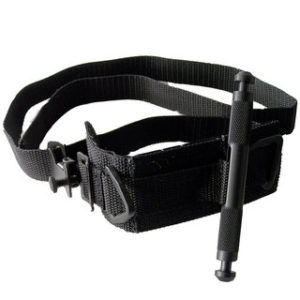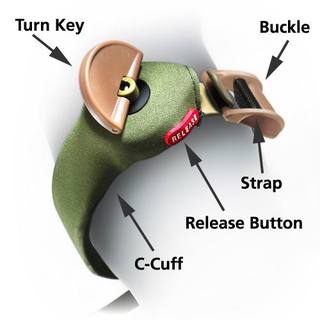
There are different types of tourniquet, including the STAT tourniquet and the MAT tourniquet. If you do not have a proper tourniquet at the scene, you can improvise a tourniquet. Click here to find out more about improvised tourniquets.
The average human holds around 5 litres of blood. Losing as little as 40% (roughly 2 litres) can be fatal. This is due to the body no longer being able to compensate for the blood loss by increasing the heart rate and dilating the blood vessels. It can take a matter of minutes to lose 40 this much blood with a femoral artery bleed. This shows that we must stop blood loss as fast as possible and we do not have a lot of time to think.
CPR and Catastrophic Bleeds
Performing CPR on someone with a catastrophic bleed will not help the situation, as you will end up pushing more blood out of the wound. It is here where the simple DRABC acronym for a primary survey falls flat. Consequently, there should be another “C” to the acronym, which stands for Catastrophic Bleed. From this, the better acronym to use is DRCABC. Time is crucial and you need to apply a tourniquet quickly if required. If done quickly, you will have more time to treat other life-threatening conditions like cardiac arrest.
Applying a Tourniquet
When we apply a tourniquet, the aim is to block the arteries and the veins to stop the blood from leaving the body. You will find arteries deeper in the limb than veins. This means you need to apply the tourniquet tight enough to block the deeper arteries and not just the veins. Applying the tourniquet too loosely would be useless, and the risk of the patient dying would continue to increase. When you apply a tourniquet, it will be painful to the patient, but without it, it is likely they will die. It will also be hard work for you both physically and emotionally but it is vital it is done quickly.
Ideally, the tourniquet needs to be applied directly to the skin, although it can be applied over clothing. Make sure there are no other injuries above the application site that could be hidden by clothing. Otherwise, they could continue to bleed out without you realising. Tourniquets are ideally applied to a single-bone site such as the upper arm (humerus) or upper leg (femur). The lower arms and legs consist of sets of two bones (the ulna and radius, and the tibia and fibula respectively). If you apply them to the lower arm or leg, the artery may not be blocked as they are protected by bone.
As well as this, do not apply the tourniquet over or close to a joint. This will cause damage to the joint and will potentially make the situation worse. The tourniquet itself should be applied at least 2 centimetres ABOVE the wound site, to ensure no blood will escape. If required, you can apply them to yourself if needed, and can even be done one-handed. This is very effective for military settings across the world.
Once Applied
Once the tourniquet has been applied, write down the exact time that it was put in place, and never remove it after then. As a First Aider, you should NEVER remove a tourniquet. Only a doctor in a hospital can remove it. This extends even to if the patient complains of the pain of the tourniquet. Reassure them that the pain should ease off as time goes by since the affected area will start to go numb. If needed, you can apply a second tourniquet if the bleeding has not stopped. When applying a second, always add it on higher up the limb than the first tourniquet.
Learn more about catastrophic bleeding, tourniquets and haemostatic dressings. Video online training at www.protourniquet.co.uk.

